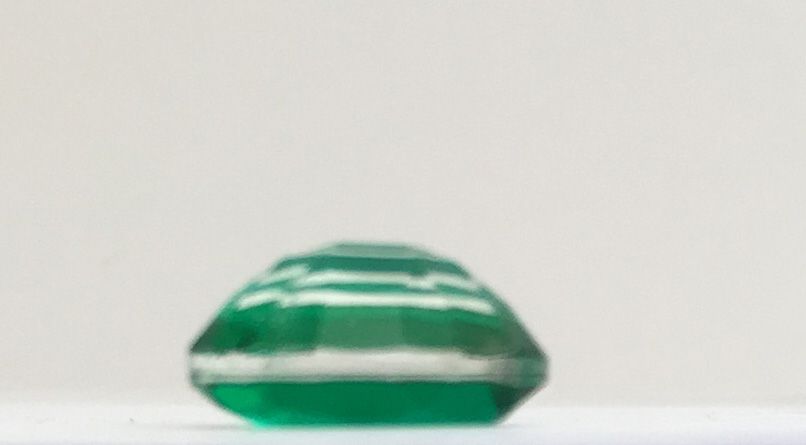When is an emerald not an emerald...
Posted on

A soudé emerald is a composite stone – 2 or more natural or man-made materials joined together to give the appearance of a single stone.
In this case, while the stone looks green when you look down into it through the table or top of the stone, both the top (crown) and bottom (pavilion) are colourless – the colour comes from a layer of green glue joining them together at the girdle (widest part of the stone). The colourless material may be quartz, synthetic spinel, sapphire or beryl and if it is beryl, beware as the RI of the stone will be that of emerald as it is a member of the beryl family…
If you look at the stone from the side you can see that the crown and pavilion are colourless. Using a 10x loupe you may be able to see bubbles in the glue and the join line at the girdle. Be aware too that if you couldn’t view the stone from the side, for example if it was set in a rubover setting, it would not be possible to see this effect or the join line at the girdle.
An interesting stone that is also found in a number of colours imitating amongst others Paraiba tourmaline, tanzanite and morganite (another member of the beryl family) just by changing the colour of the glue used...
According to the Collins dictionary, soudé is French for joined or joined together.

Add a comment: